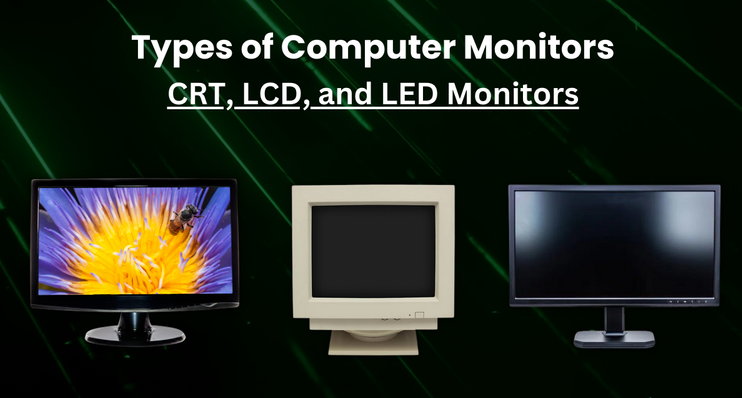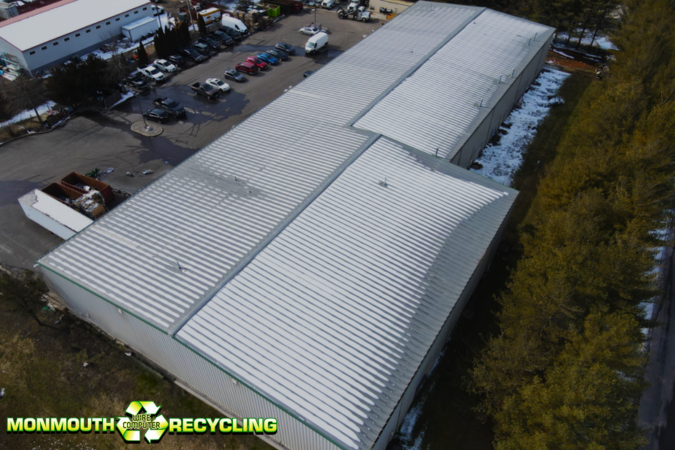Learning how to recycle a computer monitor is essential for minimizing environmental impact, adhering to legal requirements, and benefiting the community. This comprehensive guide will walk you through the importance of recycling computer monitors and the different types available, helping you understand the best methods for responsible disposal.
Importance of Recycling Computer Monitors
Environmental Impact
Computer monitors contain hazardous materials such as lead, mercury, and other heavy metals that can leach into the soil and water, causing significant environmental damage. By recycling these monitors, we can prevent these harmful substances from polluting the environment and contribute to the conservation of natural resources by recovering valuable materials like glass, plastic, and metals for reuse.
Legal Requirements
Many regions have strict regulations regarding the disposal of electronic waste, including computer monitors. Laws such as the Resource Conservation and Recovery Act (RCRA) in the United States mandate proper e-waste disposal to protect human health and the environment. Compliance with these regulations not only avoids hefty fines but also promotes corporate responsibility and sustainability.
Benefits to the Community
Recycling computer monitors supports local recycling programs and creates job opportunities within the community. It also raises awareness about the importance of e-waste recycling, encouraging more people to participate in sustainable practices. Additionally, properly recycled monitors can be refurbished and donated to schools, non-profits, and low-income families, bridging the digital divide and providing access to technology.
Types of Computer Monitors

CRT (Cathode Ray Tube) Monitors
Characteristics
CRT monitors, once the standard for computer displays, are bulky and heavy, using vacuum tube technology to display images. They have largely been replaced by newer technologies but are still found in many older systems.
Environmental Hazards
CRT monitors contain significant amounts of lead in the glass, which can pose serious environmental and health risks if not disposed of correctly. The phosphor coating inside the screen and other heavy metals used in CRT construction also contribute to their hazardous nature.
LCD (Liquid Crystal Display) Monitors
Characteristics
LCD monitors are much thinner and lighter than CRTs, using liquid crystals sandwiched between two layers of glass or plastic to produce images. They have become the most common type of monitor due to their efficiency and better display quality.
Common Materials and Their Recycling Challenges
LCD monitors contain mercury in their backlighting, which is hazardous and requires special handling during recycling. Additionally, the various plastics, circuit boards, and liquid crystal materials need to be separated and processed individually, making the recycling process more complex.
LED (Light Emitting Diode) Monitors
Characteristics
LED monitors are a type of LCD monitor that uses LED backlighting instead of traditional fluorescent lights. This technology results in better energy efficiency, slimmer designs, and superior image quality.
Advantages over CRT and LCD in Recycling
LED monitors do not contain mercury, making them less hazardous to recycle compared to traditional LCDs. Their components, including the LED backlights, are more straightforward to dismantle and process, reducing the environmental impact and improving the overall efficiency of the recycling process.
How to Recycle a Computer Monitor
Preparation for Recycling
Data Security

Importance of Wiping Data
When learning how to recycle a computer monitor, it’s crucial to ensure any data on connected devices is thoroughly wiped. This step is essential to protect your privacy and prevent sensitive information from falling into the wrong hands.
Tools and Methods for Data Destruction
There are several effective tools and methods for data destruction:
- Software Tools: Programs like DBAN (Darik’s Boot and Nuke) securely erase data from storage devices.
- Physical Destruction: Physically destroying the hard drive, such as through shredding, ensures data cannot be recovered.
Physical Preparation for Recycling a Computer Monitor
Removing External Devices
Before recycling a computer monitor, disconnect and remove any external devices such as keyboards, mice, and external hard drives. This simplifies the recycling process and ensures these peripherals are properly handled.
Cleaning the Monitor
Clean the monitor to remove dust and grime. This is especially important if the monitor will be refurbished and reused. Use a microfiber cloth and appropriate cleaning solutions to avoid damage.
Recycling Options for Computer Monitors
Manufacturer Take-Back Programs
List of Manufacturers with Recycling Programs
When considering how to recycle a computer monitor, many manufacturers offer take-back programs to facilitate recycling. Companies like Dell, HP, and Apple have established programs to accept and recycle old monitors.
How to Access These Programs
To access these programs:
- Visit the manufacturer’s website.
- Look for their recycling or take-back program section.
- Follow the provided instructions to ship or drop off your monitor.
Retailer Recycling Programs
Popular Retailers that Offer Recycling Services
Retailers such as Best Buy, Staples, and Office Depot offer convenient recycling services for computer monitors. These programs make it easier for consumers to responsibly dispose of their monitors.
Steps to Recycle Through Retailers
- Check the retailer’s recycling policy on their website.
- Bring your old monitor to the store during designated recycling hours.
- Hand over the monitor to store personnel, who will ensure it’s properly recycled.
Local E-Waste Recycling Facilities for Computer Monitor Recycling

How to Find and Contact Local Facilities
Finding local e-waste recycling facilities is a key step in how to recycle a computer monitor:
- Search online for e-waste recycling centers in your area.
- Contact the facility to confirm they accept computer monitors and inquire about any fees.
What to Expect at a Recycling Facility
At the facility, staff will:
- Weigh and inspect the monitor.
- Provide a receipt or certificate of recycling.
- Ensure the monitor is processed according to environmental regulations.
Monmouth Wire Computer Recycling is a premier e-waste recycling facility, known for its efficient and environmentally-friendly recycling processes.
Municipal Waste Programs
Overview of Local Government Programs
Many local governments offer municipal waste programs for recycling electronics, including computer monitors. These programs are often free or low-cost and are designed to make recycling accessible to residents.
Steps to Participate
- Visit your local government’s website to find recycling program details.
- Locate designated drop-off points or schedule a pick-up if available.
- Follow the provided guidelines to ensure your monitor is accepted.
Monmouth Wire Computer Recycling offers comprehensive municipal waste programs, including the provision of containers for the collection of consumer electronics at specified locations.
The Computer Monitor Recycling Process
Collection and Transportation
Initial Collection
When considering how to recycle a computer monitor, the first step is the initial collection. This involves gathering old monitors from consumers, businesses, and organizations. Collection methods can include drop-off locations, scheduled pick-ups, or collection events organized by local governments or recycling companies.
Transportation Logistics
Once collected, the monitors need to be transported to a recycling facility. Transportation logistics involve securely packing the monitors to prevent damage and contamination. Specialized vehicles may be used to ensure safe and efficient transport, adhering to environmental regulations and standards.
Material Separation
Breakdown of Monitor Components
Understanding how to recycle a computer monitor includes knowing the breakdown of its components. Monitors are disassembled into their constituent parts, such as glass, plastics, metals, and hazardous materials. This process can be manual or automated, depending on the facility’s capabilities.
Techniques Used for Separation
- Manual Disassembly: Technicians manually separate the components, ensuring precision and reducing contamination risks.
- Automated Systems: Advanced facilities use automated systems like shredders and separators to handle large volumes efficiently.
Component Recycling
Glass Recycling
The glass from computer monitors, especially from CRTs, contains lead and must be carefully processed. The glass is cleaned and melted down to create new glass products, ensuring hazardous materials are properly managed.
Metal Extraction and Recycling
Metals such as copper, aluminum, and steel are extracted from the monitors. These metals are melted down and refined to be reused in manufacturing new products, reducing the need for raw material extraction.
Plastic Recycling
Plastics from the monitor casing and components are sorted by type and color. They are then shredded and processed into pellets, which can be used to manufacture new plastic products.
Hazardous Material Handling
Materials like mercury, lead, and cadmium are hazardous and require specialized handling. These substances are safely extracted and disposed of or recycled according to strict environmental regulations to prevent contamination and health risks.
Environmental and Economic Benefits of Recycling Computer Monitors
Reduction of Landfill Waste
Impact on Landfill Space
Recycling computer monitors significantly reduces the amount of waste sent to landfills. Monitors contain materials that take a long time to decompose and can occupy valuable landfill space, exacerbating waste management issues.
Decrease in Soil and Water Contamination
Improper disposal of monitors can lead to hazardous substances leaching into the soil and water. Recycling mitigates this risk by ensuring toxic materials are safely handled and contained.
Conservation of Resources
Recovery of Precious Metals
Monitors contain precious metals such as gold, silver, and palladium. Recycling allows these valuable resources to be recovered and reused, reducing the need for mining and preserving natural resources.
Reduction in Raw Material Extraction
By recycling the materials from old monitors, the demand for raw material extraction decreases. This not only conserves natural resources but also reduces the environmental impact associated with mining and processing new materials.
Energy Savings
Energy Savings Through Recycling vs. New Production
Recycling computer monitors consumes less energy compared to manufacturing new products from raw materials. The energy savings come from reducing the need for extraction, transportation, and processing of virgin materials, contributing to lower greenhouse gas emissions and a smaller carbon footprint.
By following these steps and understanding the benefits, you can effectively learn how to recycle a computer monitor, contributing to a more sustainable and environmentally friendly future.
Challenges in Computer Monitor Recycling
Hazardous Materials Handling
Health and Safety Concerns
Understanding how to recycle a computer monitor involves recognizing the health and safety concerns associated with hazardous materials like lead, mercury, and cadmium. These substances can pose serious risks to human health and the environment if not handled properly during the recycling process.
Regulatory Requirements
Recycling computer monitors must comply with strict regulatory requirements to ensure the safe handling and disposal of hazardous materials. Regulations vary by region but generally include guidelines for collection, transportation, and processing to minimize environmental impact and protect public health.
Economic Viability
Costs vs. Benefits of Recycling Processes
When considering how to recycle a computer monitor, it’s important to evaluate the economic viability of the recycling processes. The costs of collecting, transporting, and processing monitors can be high, but these are often offset by the benefits of recovering valuable materials and reducing environmental damage.
Technological Barriers
Advances in Recycling Technology
Advances in recycling technology have made it easier to recycle computer monitors efficiently. New methods and machinery allow for better separation and processing of materials, reducing the environmental footprint of the recycling process.
Current Limitations
Despite technological advancements, there are still limitations in recycling computer monitors. Some materials are difficult to separate, and the presence of hazardous substances can complicate the recycling process. Continued innovation and investment are needed to overcome these barriers.
Best Practices for Consumers Recycling Computer Monitors
Proper Disposal Methods
Dos and Don’ts of Monitor Disposal
When learning how to recycle a computer monitor, it’s crucial to follow proper disposal methods. Do:
- Use designated e-waste recycling programs.
- Ensure the monitor is intact to prevent hazardous material leaks. Don’t:
- Throw monitors in regular trash.
- Attempt to dismantle the monitor yourself without proper knowledge.
Avoiding Illegal Dumping
Illegal dumping of computer monitors can lead to significant environmental harm and legal consequences. Always use certified e-waste recycling facilities and follow local guidelines to dispose of monitors responsibly.
Supporting Recycling Initiatives
Participating in E-Waste Drives
Participating in e-waste drives is an excellent way to recycle computer monitors. These events are often organized by local governments, non-profits, or businesses and provide a convenient way for consumers to dispose of their old electronics.
Advocating for Better Recycling Policies
Consumers can support recycling initiatives by advocating for better recycling policies. This includes pushing for more accessible recycling programs, stricter regulations on e-waste disposal, and increased funding for recycling technology research.
Purchasing Decisions
Choosing Eco-Friendly Monitors
When purchasing new monitors, opt for eco-friendly options. Look for monitors that use fewer hazardous materials, are energy-efficient, and come from manufacturers with strong recycling programs.
Considerations for Future Recyclability
Consider the future recyclability of a monitor before purchasing. Choose models that are easier to disassemble and recycle, and support companies that prioritize sustainable practices. This foresight ensures that when the time comes, you’ll know how to recycle a computer monitor effectively.
Understanding how to recycle a computer monitor is vital for environmental protection, regulatory compliance, and community benefits. Follow the steps of data security, physical preparation, and choosing the right recycling option to ensure safe and effective recycling. Let’s all take responsibility and recycle our monitors properly to contribute to a sustainable future. For all your e-waste and recycling needs, contact Monmouth Wire Computer Recycling.

